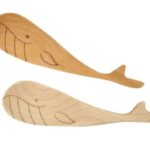Oregon basketball has grown into a symbol of athletic excellence, school spirit, and dedication, representing a rich history of success and consistent performance both on the men’s and women’s fronts. With a deeply ingrained basketball culture, innovative coaching, and talented athletes, the University of Oregon (UO) and its basketball programs have made a significant mark on the collegiate basketball landscape. The Oregon Ducks’ vibrant green and yellow uniforms are easily recognizable, but the story of their success goes far beyond aesthetics.
In this article, we take a comprehensive look at Oregon basketball, covering its legacy, key moments, current roster dynamics, coaching, and how it fits into the larger world of collegiate sports. Whether you’re an avid fan or a newcomer, this guide will provide valuable insights into the program’s impact and future.
Historical Overview of Oregon Basketball
1. Origins of the Program
The University of Oregon men’s basketball team was founded in 1902, while the women’s program gained prominence in the 1970s. The men’s team played their first intercollegiate game against Multnomah Athletic Club and won convincingly. Though early successes were limited, the program set the foundation for future glory.
2. The 1939 NCAA Championship
Oregon achieved its first major breakthrough during the 1938-1939 season when the men’s team, nicknamed the “Tall Firs,” won the inaugural NCAA tournament, defeating Ohio State 46-33. This victory remains a key moment in the school’s history, symbolizing the dawn of NCAA-level basketball success.
Led by coach Howard Hobson and key players like Laddie Gale and John Dick, Oregon’s win highlighted a strategic, fast-paced style that was ahead of its time. The “Tall Firs” nickname came from the team’s height advantage, which they used to dominate opponents.
Key Eras in Oregon Basketball
1. 1960s-1970s: Building Foundations
Although the program had intermittent successes in the mid-20th century, it wasn’t until the 1960s and 1970s that Oregon basketball gained significant traction. During this period, several standout players earned All-American honors, helping to cement Oregon’s reputation as a breeding ground for top talent.
2. Ernie Kent Era (1997-2010)
One of the most impactful periods of Oregon basketball came during Ernie Kent’s 13-year tenure as head coach. Under his leadership, the Ducks reached five NCAA tournaments, including two trips to the Elite Eight in 2002 and 2007. Kent’s teams were known for their high-scoring offense and exceptional three-point shooting.
Notable players during this era included Luke Ridnour, Aaron Brooks, and Tajuan Porter. The team’s fan base grew exponentially, and their home games at the McArthur Court became some of the most exciting events in college basketball.
3. The Dana Altman Era (2010-Present)
Dana Altman’s hiring marked the beginning of a new golden era for Oregon basketball. Since his arrival, Altman has transformed the program into a perennial powerhouse in the Pac-12 Conference. With numerous NCAA tournament appearances, including a Final Four berth in 2017, Altman’s emphasis on disciplined play and balanced offense has brought sustained success.
Oregon Women’s Basketball: A Rising Powerhouse
Oregon’s women’s basketball team has recently become a dominant force, with elite-level talent and a dedicated coaching staff leading the charge.
1. The Sabrina Ionescu Effect
One of the most influential players in women’s collegiate basketball history, Sabrina Ionescu, elevated Oregon to national prominence during her tenure from 2016 to 2020. The triple-double queen not only set multiple records but also led the team to an NCAA Final Four appearance in 2019.
Her leadership, combined with the playmaking abilities of teammates like Ruthy Hebard and Satou Sabally, made Oregon a legitimate championship contender. Ionescu’s legacy continues to impact recruiting and team dynamics even after her departure to the WNBA.
2. Current Success and Recruiting
Coach Kelly Graves has built a program centered on player development, recruiting elite high school prospects, and fostering team chemistry. With regular appearances in the NCAA tournament and a focus on fast, high-scoring play, the women’s team remains a contender for future titles.
Notable Players and Their Impact
Oregon basketball has produced several athletes who have gone on to successful careers in the NBA and WNBA. Below are some of the notable alumni:
1. Men’s Program Alumni
- Luke Ridnour: Known for his exceptional playmaking and three-point shooting, Ridnour enjoyed a long NBA career after leading Oregon to success in the early 2000s.
- Aaron Brooks: A dynamic scorer, Brooks became a key figure in Oregon’s run to the Elite Eight in 2007 and had a productive NBA career.
- Bol Bol: Son of NBA legend Manute Bol, Bol Bol made headlines for his height and shot-blocking abilities during his short stint with Oregon before entering the NBA.
2. Women’s Program Alumni
- Sabrina Ionescu: As a #1 overall pick in the WNBA draft, Ionescu’s collegiate career was marked by unprecedented statistical achievements, making her a role model for young athletes.
- Ruthy Hebard: A dominant post player, Hebard’s combination of rebounding and scoring made her a force for Oregon and later in the WNBA.
- Satou Sabally: Known for her versatility, Sabally transitioned smoothly from collegiate stardom to becoming a key WNBA player.
Training and Facilities: Preparing for Success
Oregon’s success isn’t limited to talent alone. The state-of-the-art training facilities and comprehensive support for athletes have made the university an attractive destination for recruits.
1. Matthew Knight Arena
Opened in 2011, the Matthew Knight Arena has been a game-changer for Oregon basketball. With a capacity of over 12,000, it provides a high-energy environment and cutting-edge technology to enhance player performance. The arena has also served as a key recruitment tool, with its modern design impressing prospects and their families.
2. Training Programs
Both the men’s and women’s teams benefit from strength and conditioning programs, personalized coaching, and access to analytics that help refine gameplay. Players undergo rigorous training focused on speed, agility, and decision-making, allowing them to adapt quickly on the court.
Rivalries and Pac-12 Competition
Oregon basketball enjoys intense rivalries within the Pac-12 Conference, particularly with schools like the University of Washington and Oregon State University. These rivalries are fueled by proximity and competitive matchups, with fans eagerly anticipating every meeting.
1. Oregon vs. Oregon State
The Civil War rivalry between the Ducks and the Beavers is one of the most anticipated events of the season. These games are known for their emotional intensity, with both teams striving to assert dominance.
2. Oregon vs. UCLA
Over the years, Oregon has developed a strong rivalry with UCLA due to high-stakes Pac-12 tournament games. The matchup often draws large crowds, as both teams are typically competing for top conference spots.
Challenges and Areas for Growth
Despite its successes, Oregon basketball faces challenges that require constant adaptation. These include maintaining consistency, competing with top recruiting programs, and managing injuries. Moreover, NIL (Name, Image, and Likeness) policies have introduced new dynamics in college athletics, influencing player recruitment and retention.
1. Recruitment Challenges
While Oregon remains a prime destination, competing against perennial powerhouses like Duke, Kentucky, and UConn means they must continuously innovate their recruitment strategies.
2. Maintaining Player Health
Basketball is a physically demanding sport, and injuries can derail seasons. Oregon’s training staff works tirelessly to minimize injuries, but long-term player health remains an area of concern.
Looking Ahead: The Future of Oregon Basketball
Oregon basketball’s future appears bright, with strong coaching staffs, robust recruiting pipelines, and an enduring fan base. Both the men’s and women’s teams have laid the groundwork for sustained success and national prominence.
1. Emerging Stars
With new recruits joining every season, the Ducks are poised to continue their winning traditions. Fans can expect to see new breakout stars and future NBA or WNBA talent.
2. Expansion of Facilities
As Oregon continues to invest in its athletic programs, upgrades to training centers and practice facilities will further enhance player development and game preparation.
FAQs
1. What is Oregon’s most significant basketball achievement?
Oregon’s most notable achievement is winning the inaugural NCAA men’s basketball tournament in 1939. For the women’s program, the 2019 Final Four appearance was a major milestone.
2. Who is Oregon’s most famous basketball player?
Sabrina Ionescu is often considered the most famous player, thanks to her record-breaking performances and leadership. Luke Ridnour and Aaron Brooks are also notable from the men’s side.
3. Where does Oregon play its home games?
Oregon’s home games are played at the Matthew Knight Arena, a state-of-the-art facility located on the university’s campus.
4. How has Dana Altman impacted Oregon basketball?
Since becoming head coach in 2010, Altman has led the program to consistent NCAA tournament appearances and a Final Four run in 2017.
5. Is Oregon women’s basketball still competitive after Sabrina Ionescu’s departure?
Yes, the women’s team remains highly competitive under coach Kelly Graves, thanks to strong recruiting and player development.
6. What are the key rivalries for Oregon basketball?
Oregon’s key rivalries include games against Oregon State (Civil War) and UCLA, both of which draw large crowds and intense competition.
Oregon basketball’s influence continues to expand, combining athletic excellence, strategic coaching, and a passionate fan base. Its legacy is a testament to hard work and innovation, ensuring its place as a top collegiate basketball program for years to come.







